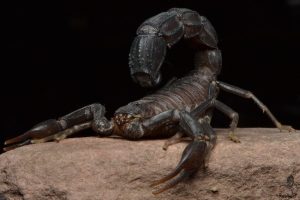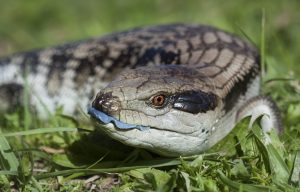The Turkey is one of the largest chicken species, often growing three to four times bigger than the chickens we raise today. As a result, the profit from raising them is usually much higher. However, many farm owners are still unsure what to feed turkeys to maximize profit while ensuring they grow strong and healthy. This article from KnowAllAnimals will give you accurate and detailed answers to the question, “What do turkeys eat?”
- Kingdom: Animalia
- Phylum: Chordata
- Class: Aves
- Order: Galliformes
- Family: Phasianidae
- Subfamily: Phasianinae
- Tribe: Tetraonini
- Genus: Meleagris Linnaeus, 1758
1. What Kind of Chicken is a Turkey?
The turkey is a large bird belonging to the genus Meleagris, native to the forests and grasslands of North America. Turkeys are in the order Galliformes. They are often considered a distinct family, Meleagrididae, but recently some ornithologists, such as the American Ornithological Society, have classified them into the subfamily Meleagrididae, along with pheasants in the subfamily Phasianinae. However, this has not been recognized everywhere.
You may have eaten turkey on Christmas or Thanksgiving without knowing the origin and characteristics of the breed. What kind of turkey is that? Why is it called a turkey? Turkeys are generally one of the largest chicken species that live in the forests and grasslands of North America. There are two main types of turkeys: wild turkeys from North America and ocellated turkeys from Central America. When they were domesticated by local people, they became a type of poultry raised for meat and eggs. For this reason, these crossbred turkeys are also called domestic turkeys. The Vietnamese name “Gà Tây” (Western Chicken) comes from the French, who brought the chicken to the West. Because it originated in Western countries, it was called a “Western chicken” to distinguish it from native breeds.
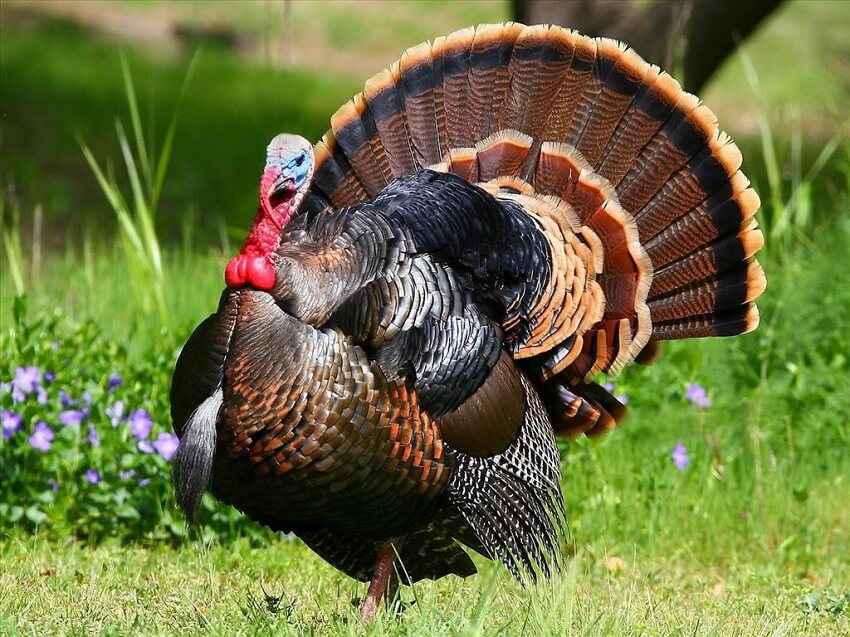
2. Characteristics of a Turkey
Male turkeys are larger than female turkeys. When domesticated, a male turkey can reach a weight of 7.8 to 11 or 12 kg (17–26 lbs), while a female turkey is usually lighter, weighing about 3 to 4 kg (6.6–9 lbs). Because of their heavy bodies, turkeys cannot fly for long distances, and after being domesticated and crossbred, they have fluffy feathers that are gray-black or gray-white, and a few have white feathers. Male turkeys have colorful feathers.
Male turkeys reach maturity after about 10 months, while female turkeys mature earlier, at around 8 months of age. Baby turkeys are difficult to raise, but once they reach 2 months of age, they grow very quickly. Male turkeys can fan out their tail feathers like a peacock, and a few female turkeys can also do this, but it is rare. In the morning, a male turkey will often fan out and wag its tail to impress a female turkey, and a female turkey may also respond by fanning her tail, but it will be smaller than the male’s.
3. What Do Turkeys Eat?
Turkeys are an omnivorous bird; they can eat many different types of food such as commercial feed, rice, corn, beans, vegetables, fruits, insects, shrimp, and fish. When you are raising them, you can feed them commercial feed to save time, but the cost will be quite high.
Successfully raising turkeys can bring a farm owner a very large profit, as this is a species of chicken with a very high economic value. For small-scale farmers, finding food for the chickens is quite simple; you can feed them the same types of food as our regular chickens.
If you are raising a large number of chickens on a farm, we think that in addition to using commercial feed, you should create your own food source for them to reduce costs and increase profits. One of the most effective ways to raise them is to let them free-range in a large area. However, for the first 21 days after the chicks hatch, you should keep them in a cage and feed them commercial feed that is new and high in protein, energy, and minerals. After that period, you can let them free-range to eat natural foods.
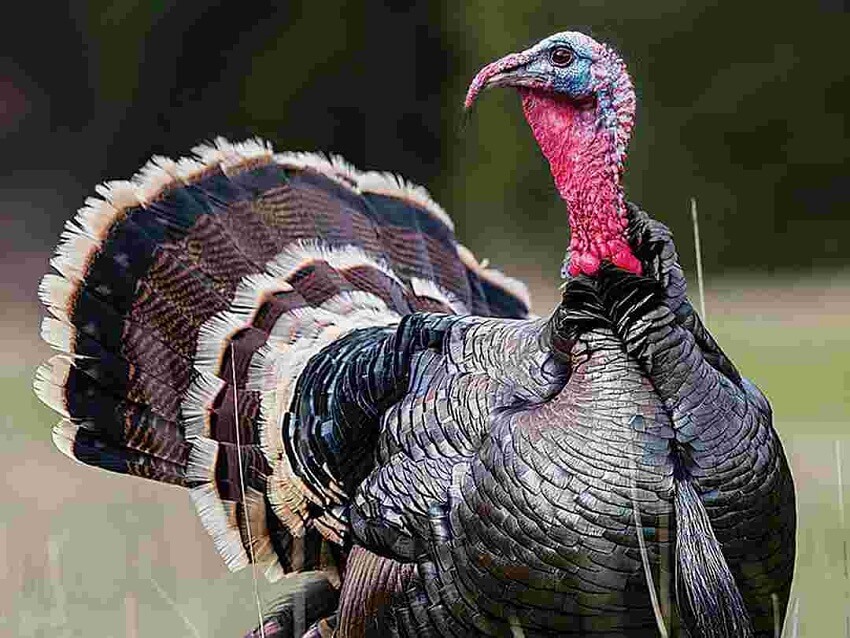
4. TOP 10 Most Popular Turkey Breeds Today
Here is a detailed list of 10 popular turkey breeds:
4.1. The Beltsville Small White
The Beltsville Small White turkey breed was created around the 1930s and has become an excellent egg-laying breed. They are known for their ability to lay many eggs and have a good hatch rate. Although the meat of this breed is considered to be milder than that of some other turkey breeds, their excellent egg-laying ability has made them a popular choice in the turkey farming industry.
4.2. Black Turkey
The Black Turkey breed has a distinctive black plumage. Their origin can be traced back to the 1500s, where they were known as “Mexican wild turkeys.” They were then brought back to Europe by the Spanish and have become a popular turkey breed in European countries. The black plumage of this breed gives it a unique and eye-catching beauty.
4.3. The Blue Slate
The Blue Slate turkey, also known as the Lavender Turkey, has a slate-gray plumage that is a mix of white and black. This is one of the most beautiful turkey breeds. Depending on their gender, they can weigh from 6 to 11 kg (13–24 lbs). With their unique plumage, the Blue Slate turkey makes an impressive sight and is a popular choice in the turkey farming industry.
4.4. The Bourbon Red
The Bourbon Red turkey breed has a beautiful red plumage. Among all the crossbred turkey breeds, the meat of this breed is said to be the most delicious, with a full flavor and richness. The Bourbon Red turkey was first bred in the 17th century in Kentucky. Depending on their gender, they can weigh from 5.5 to 10.5 kg (12–23 lbs). The combination of its sparkling red plumage and wonderful flavor has made the Bourbon Red turkey a popular choice for meat production.
4.5. The Bronze
The Bronze turkey breed is one of the most popular turkey breeds due to their size. When they reach maturity, they can weigh from 7.5 to 11.5 kg (17–25 lbs). The bronze-brown plumage of the Bronze turkey makes them stand out and a top choice for raising turkeys for both meat and decoration.
4.6. The Narragansett
The Narragansett turkey breed was selectively bred before commercial turkey breeds were available. They weigh from 8 to 13.5 kg (18–30 lbs) and are known for their multicolored plumage, which is a mix of white, black, and gray. The Narragansett turkey is highly valued for its good egg-laying ability and its ability to withstand different climates.
4.7. The Royal Palm
The Royal Palm turkey breed has a black and white plumage that gives it a striking beauty. While not popular for meat production, the Royal Palm turkey attracts attention with its flamboyant beauty and brilliant plumage. They weigh from 4.5 to 7.5 kg (10–17 lbs) and are excellent foragers, with a good ability to catch insects. Because of their small size, they are also able to fly.
4.8. The Jersey Buff
The Jersey Buff turkey breed has a reddish-brown body plumage and white-brown tail feathers, similar to a milky coffee color. These turkeys are quite gentle and are known for their good egg-laying ability. They weigh from 5.5 to 9.5 kg (12–21 lbs) and typically reproduce naturally.
4.9. The White Holland
The White Holland turkey breed was bred in Holland and was brought to the United States with early settlers. Widely used for meat since the 1800s, the White Holland turkey has a gentle nature and is a pet that adapts well to various climates.
4.10. The Auburn Turkey
The Auburn Turkey breed is one of the rarest turkey breeds available. Their origin can be traced back to the eastern U.S. in the late 17th century. The Auburn Turkey has a characteristic light brown plumage. This breed has retained characteristics that most other breeds have lost. A crossbreed of the Auburn Turkey is called the Silver Auburn, which shows the diversity and uniqueness of the Auburn Turkey breed.
In conclusion, when asked about a turkey’s weight, there is no single answer. Depending on the breed, a turkey’s weight can range from 4 to 14 kg (9–31 lbs), showing the great diversity in their size.
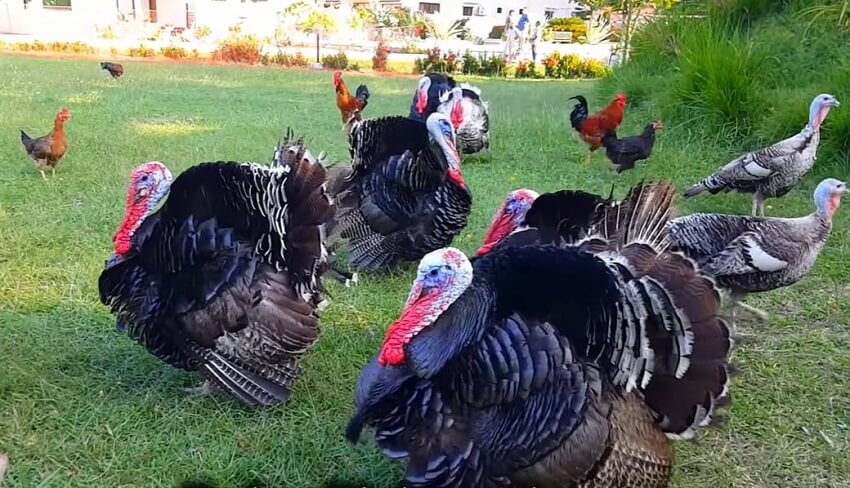
5. What Is the Heaviest Turkey Breed in the World?
The largest turkey breed in the world is the Broad-Breasted White Turkey, and they can reach an astonishingly heavy weight. However, their body size is so large that they are unable to reproduce naturally. To ensure the reproduction of this breed, artificial insemination is necessary.
One of the main advantages of the Broad-Breasted White Turkey is its rapid growth rate. After only about 12 weeks of being raised, they reach a weight that is sufficient for meat production. Therefore, this is considered the best turkey breed for commercial processing.
It is a fact that the Broad-Breasted White Turkey has become the most popular turkey breed raised and consumed by Americans. They have a weight that ranges from 7.5 to 11.5 kg (17–25 lbs). Although not the heaviest turkey breed in the world, due to their popularity, they are the largest and most widely raised breed.
7. FAQs
1. What is the main food source for wild turkeys?
Wild turkeys mainly eat seeds, nuts, berries, and insects, depending on the season.
2. Can turkeys eat fruits and vegetables?
Yes, turkeys enjoy a variety of fruits and vegetables such as apples, grapes, lettuce, and carrots.
3. Do turkeys eat meat or insects?
Turkeys are omnivores, so they do eat insects, small reptiles, and even frogs when available.
4. What should you avoid feeding turkeys?
Avoid processed foods, salty snacks, and anything containing chocolate or caffeine, as they can harm turkeys.
In this article, Know All Animals has shared the most accurate and detailed information regarding what do Turkeys eat and what to keep in mind when feeding them. We hope this has provided you with useful information to help you plan a more effective turkey farming operation.
References: https://en.wikipedia.org/wiki/Domestic_turkey

